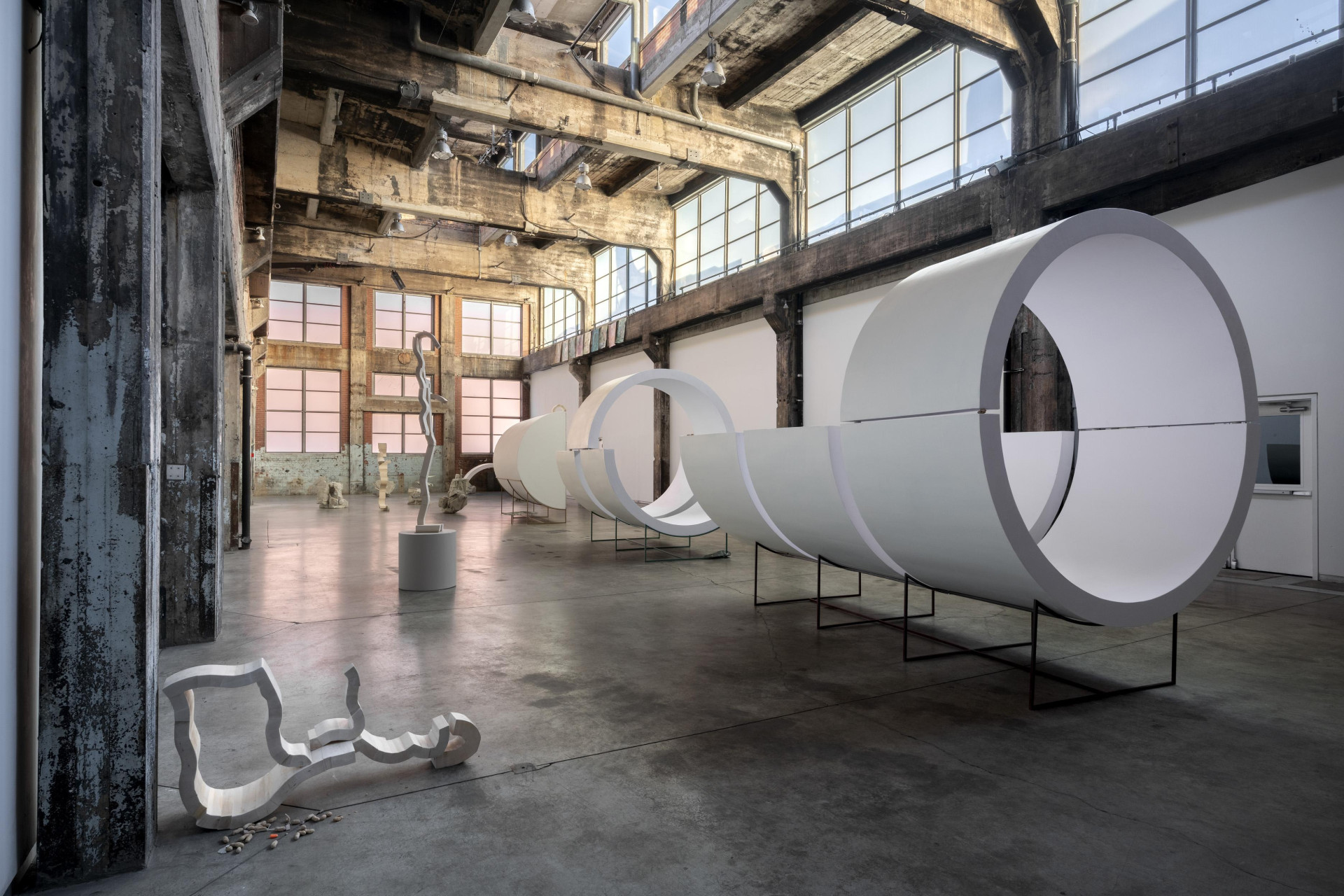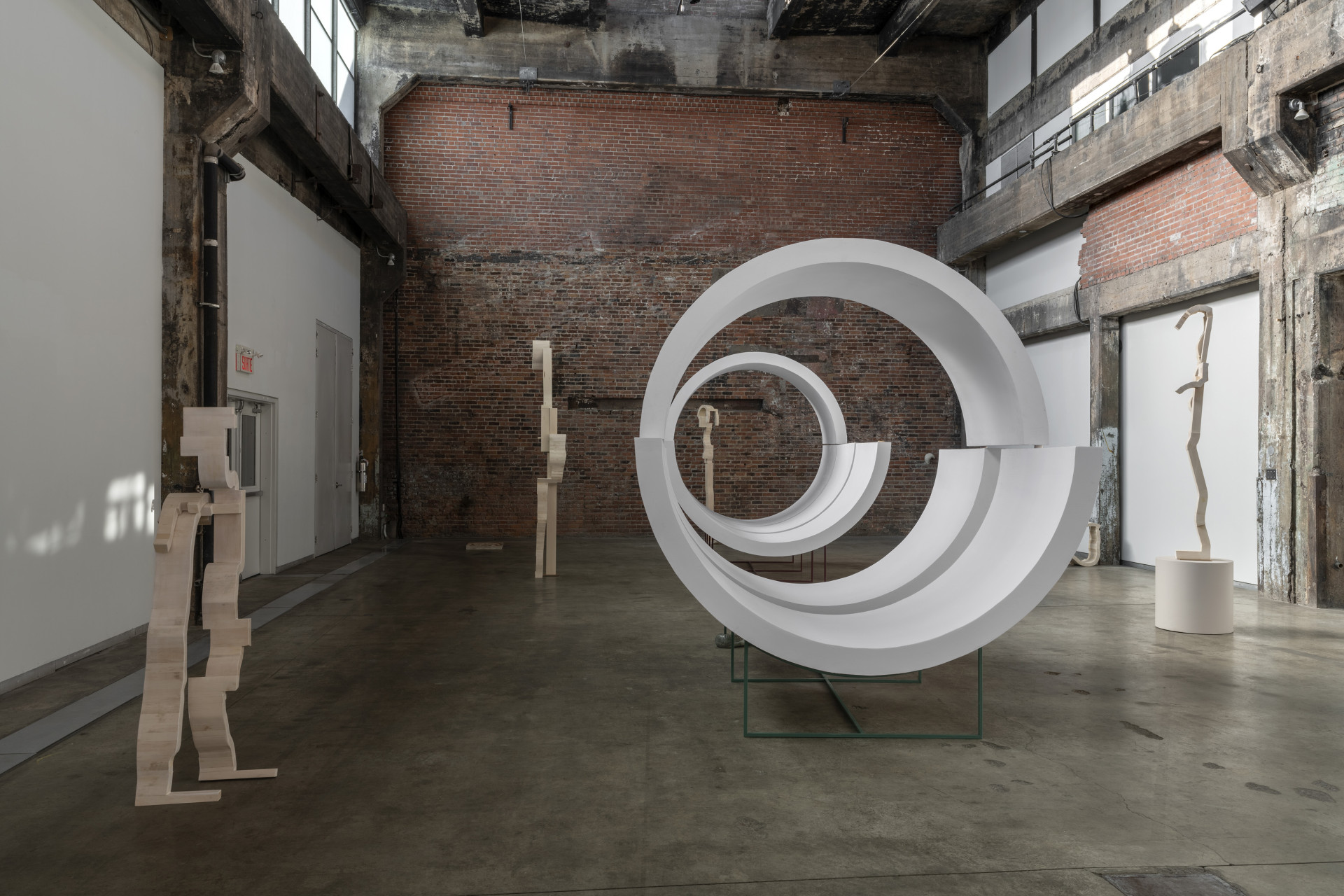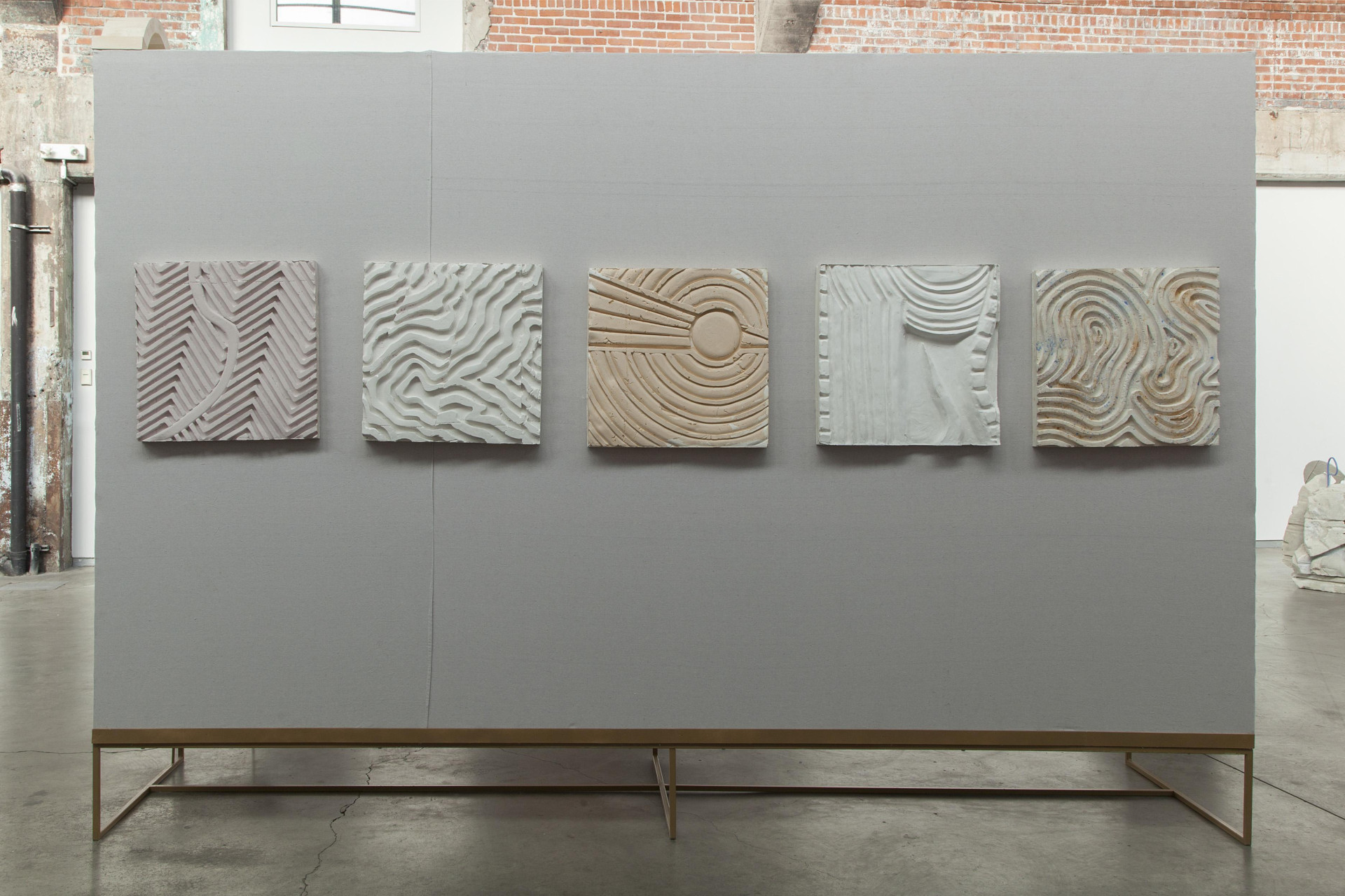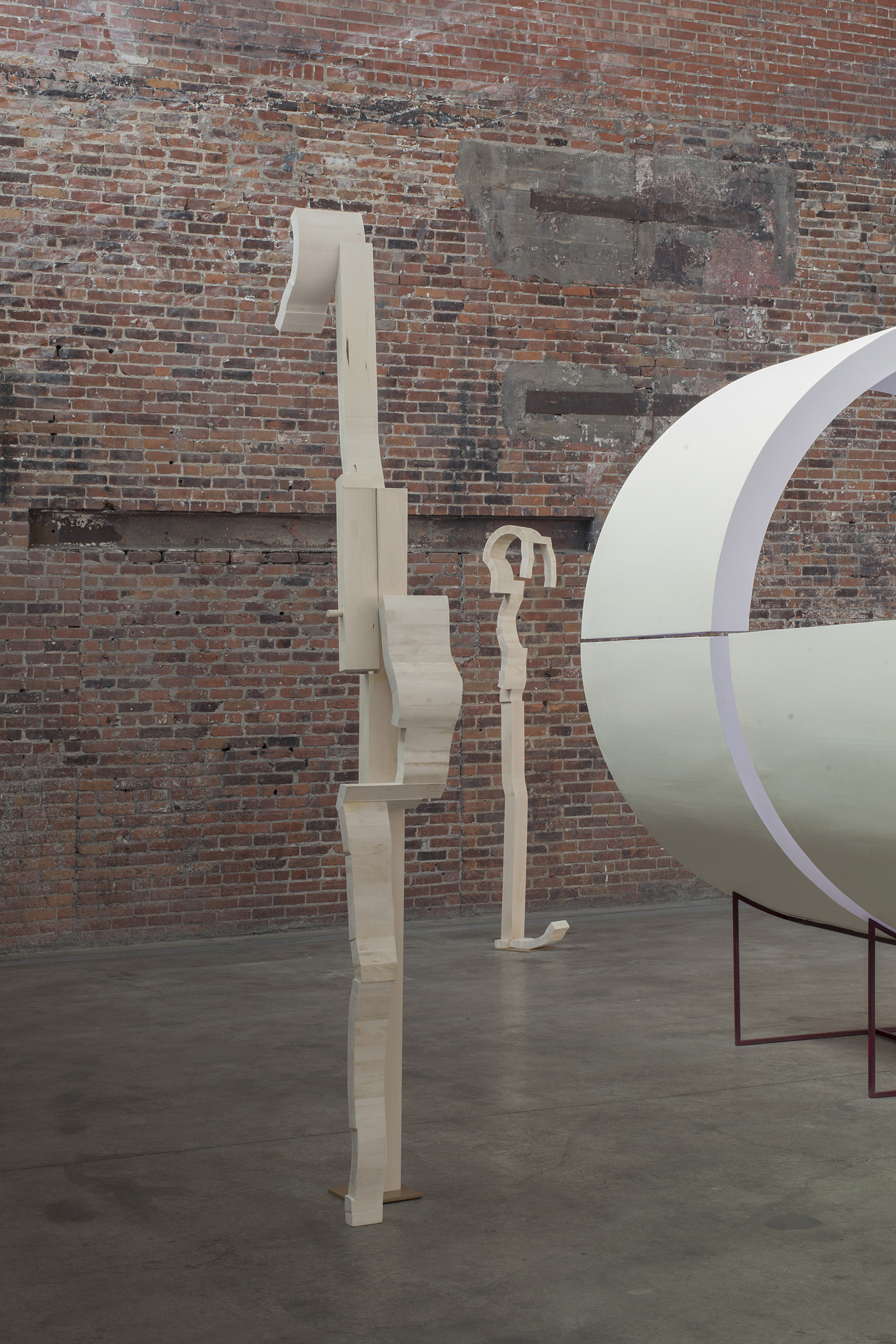




Conglomerates, Anachronies, and other Amalgams
Featuring the most recent works of David Armstrong Six, this exhibition presents an installation especially made for the Darling Foundry’s main hall, as well as various sculptures independently set up in the space: a first group of sculptures with an organic and rocky appearance are placed on the floor; polished half cylinders are installed in the space; while slim vegetal and animal forms made of wood are scattered around the hall.
Functioning as a whole to introduce specific plastic languages and sculptural expressions, the different sculptures play with styles and genres, humorously and freely asserting their heterogeneity. They are also active systems in a choreography subject to the dualities and associations operating between and within the various series.
Using the aesthetics of the ruin and the materiality of tectonic rock, the first series of sculptures is an amalgam of culture and geology resulting from a composition of modules and various objects thickly coated in raw cement. Looking like conglomerates that are refined and rudimentary all at once, these works represent a temporal and formal compression, an anachrony.
They systematically offer distinct elements and casts of animal parts associated with various eras or cultures: giant, prehistoric leeches reproduced in concrete; petrified fragments of signage with old Chinese characters embedded in the material; impressions of bubble wrap, a material widely used in the art world and a symbol of the current culture of plastic packaging. The coexistence of the different processes adds complexity and creates tension. For example, a duality exists between making impressions and casting, notching and modelling—one removes material while the other adds—which opens a dialogue between the negative spaces, protrusions, recesses, and accumulations.
The confusion created by the many techniques—between representation, raw material, a play of scale, memory games, and mental projection—engage the viewer in a direct experience of the work and a decoding process. Paying no heed to codes and conventions and belonging to no apparent era, the works seem to traverse time as they trigger formal associations, fortuitous and unlikely encounters. At the same time, they cohabitate in a symbiotic manner in the context of the exhibition.
While the first group of sculptures seem to take root in the gallery floor, the monumental and geometric installation is made with precision and installed on custom-built, metal pedestals, has a finished design, and features a specific palette of colours. In the form of a massive tube, the installation suggests a tunnel or grotto (an urban underground passage), some kind of spaceship where archives could be kept, but also an exhaust pipe. A gallery wall projects like a piston from the tube, on which square tiles executed in bas-relief have been hung in a checkerboard pattern. Their compositions of abstract motifs might evoke Indian wood blocks, carved and hollowed to be used for textile printing, or a giant computer keyboard. Ironically, they are simply casts of sneaker shoeprints that have been enlarged and reframed, adding to the confusion between the techniques and the motifs.
Slender sculptures made in an altogether different style using a wood-gluing technique are dispersed throughout the space of these two major interventions. Made of components assembled together to look like articulated spinal columns, the sculptures have a vegetal, animal, or human appearance but could also serve as display stands, which again gives them an ambiguous status. Their postures, derived from contemporary culture, echo the hip swinging style of a cool attitude, embodying indolence, loitering, and idleness.
These characters seem to be the spectators of the other sculptures in the space. “Students perhaps, in the dust and gases of a free university. Their status is ambiguous,” the artist suggests. Are they students of the night school mentioned in the exhibition title? Is this the setting of a fine arts studio, a science museum or palace of discovery, a skatepark, or a future archaeological site? Have these sci-fi characters come to colonize the site?
Through these aesthetic superimpositions of techniques and cultures, the synchronization of time and information, the heterogeneous and disparate conglomerate of materials and languages borrowed from the aesthetics of the ruin, counterculture, and acceleration, Armstrong Six makes us question the impact of generations with a playful and poetic proposition that performs the virtuosity of a sculptor very much of his time.
Caroline Andrieux
Translated by Oana Avasilichioaei

David Armstrong Six
Born in Belleville, Ontario, David Armstrong Six lives and works in Montreal. His work has been exhibited internationally since 1997, including at Night Gallery (Los Angeles), Nikolaj Kunsthall Gallery (Copenhagen), during the Quebec Triennial at the Musée d’art contemporain de Montréal (Montreal) as well as at White Columns (New York). He has also presented his work in solo exhibitions at the Darling Foundry (Montreal), the Museum of Contemporary Canadian Art (Toronto) and the Künstlerhaus Bethanien (Berlin). In 2011, he was a finalist for the Prix Louis-Comtois. Armstrong Six’s work can be found in the permanent collections of the National Gallery of Canada, the Musée national des beaux-arts du Québec, the Musée d’art contemporain de Montréal, Global Affairs Canada, the Art Gallery of Ontario, and the Hart House Collection – University of Toronto, among others. David Armstrong Six is represented by Galerie Bradley Ertaskiran in Montreal.
Curator
Caroline Andrieux
